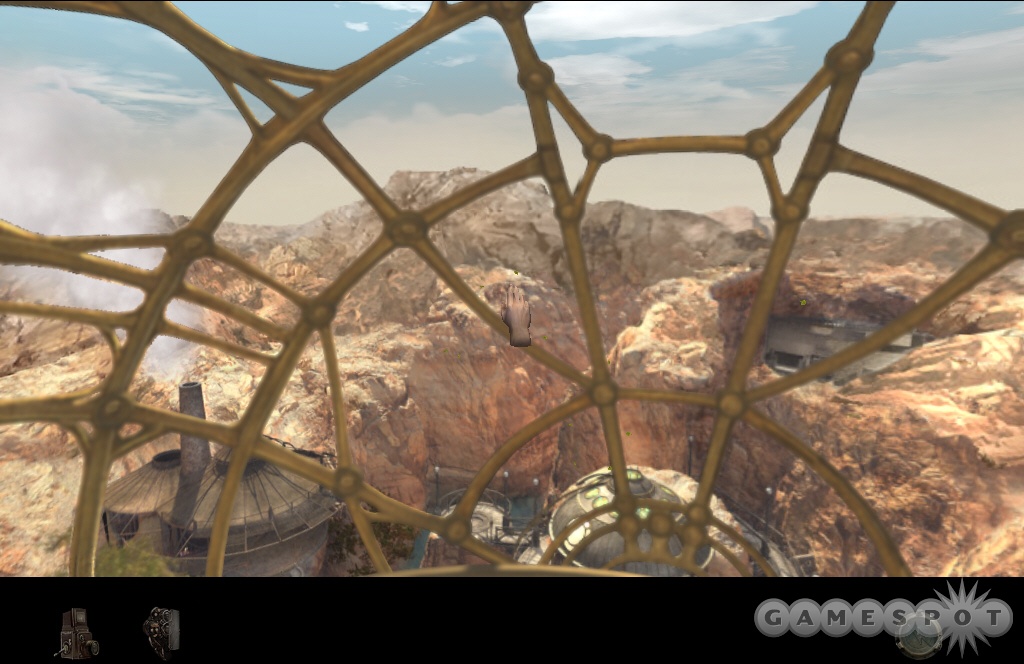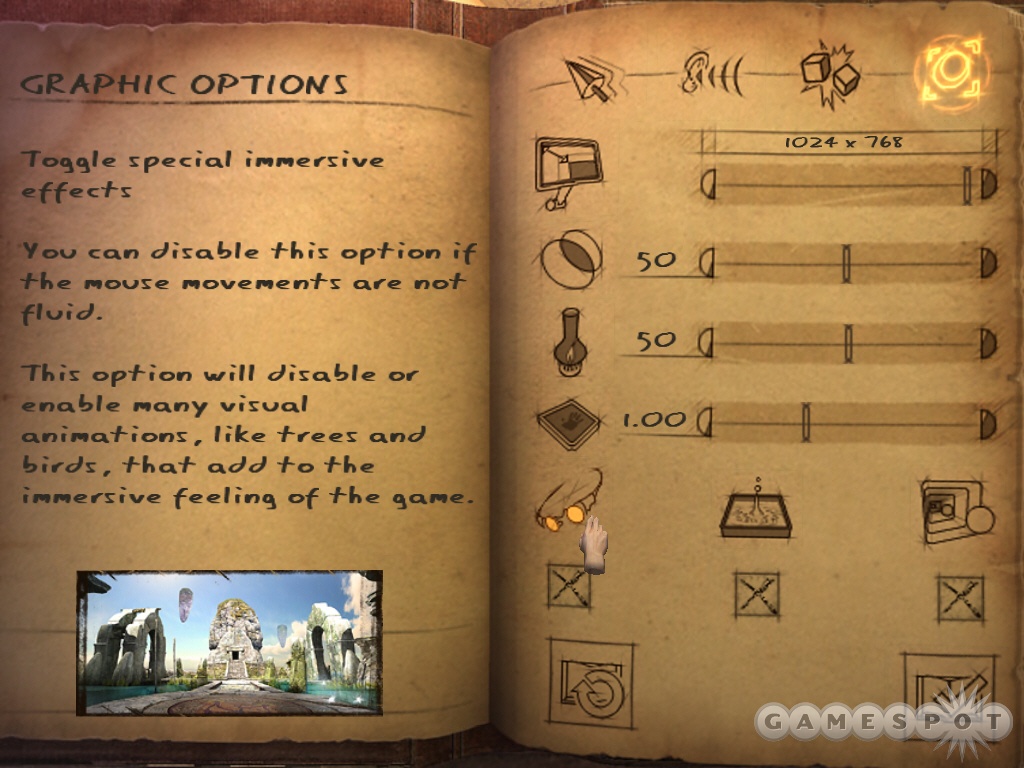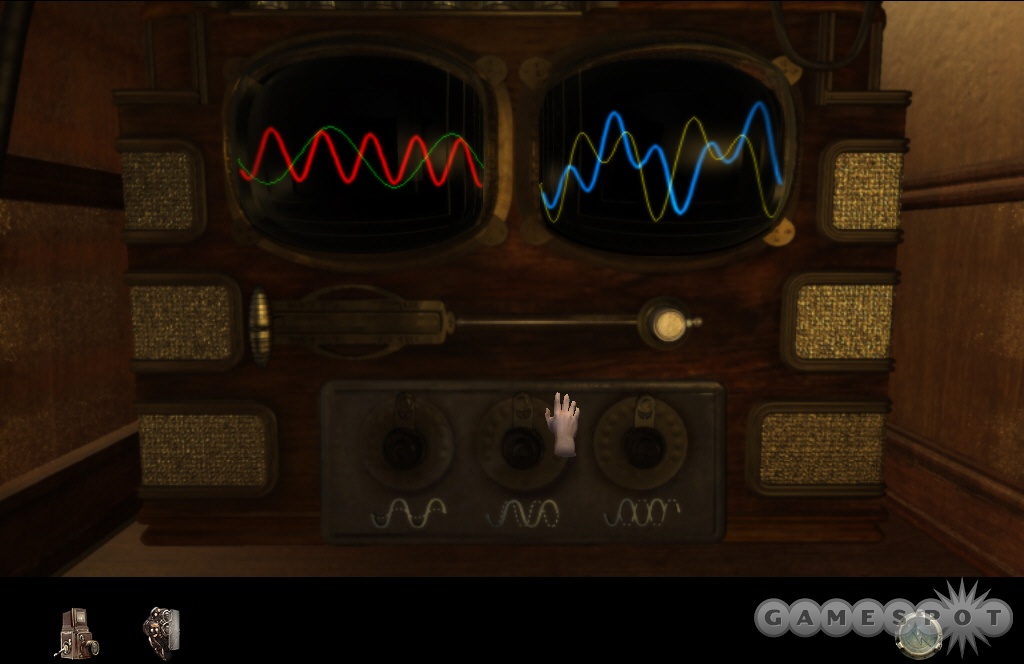Myst IV Revelation Final Impressions
We got our hands on the retail version of next game in the Myst series several days before its release. Read our first impressions of the finished game.
For more than a decade now, the Myst series has enjoyed its status as the definitive example of the modern graphical adventure game. The series has always allowed players to explore richly detailed, photo-realistic, and yet surreal worlds, while solving puzzles and unraveling intriguing stories. And, judging by our first impressions of Myst IV Revelation, it seems to be very much in line with the rest of the series, delivering the same sort of cerebral, wonder-filled gameplay experiences as its predecessors. The game eschews the fully 3D environments of last year's Uru: Ages Beyond Myst and instead presents '90s-era old-school adventure gameplay, in which you're free to rotate your first-person perspective to look all around you (though your movement is node-based rather than free roaming). With that said, Myst IV delivers an undeniably striking visual presentation--and the world of the game has a surprisingly tactile feel. In other words: We're quite impressed with what we've seen of the game so far.

Like its predecessors, Myst IV's plot is not sprawled out in front of you from the start, though fans of the series will quickly notice the strong connections to the previous games. That's not to say this will be a routine experience--the first thing you see when you begin playing Myst IV is not some barren surrealist landscape devoid of life, but the smiling face of a young girl--Atrus' daughter. Early on in the game, you'll meet Atrus (convincingly played by Myst co-creator Rand Miller), who'll ask you to help him with a task involving the fates of his malcontent sons Sirrus and Achenar. As in previous Myst games, your character is anonymous and disembodied--you are addressed by Atrus and his daughter in the second person, giving you the impression that it's actually you exploring the game's mysterious world.
That sounds like a typical cliché, but in fact, Myst IV pulls off some interesting techniques that really do create a convincing atmosphere. Notwithstanding the game's impressive visuals and ambient music, what really struck us was the game's subtle use of sound. As in previous Myst games, Myst IV is playable using only the mouse--an onscreen hand-shaped cursor contextually reveals whether you can move forward, examine something closely, manipulate an object, or simply tap on something. Most parts of the environment in the game of course don't do anything--and yet you can still tap on them, producing a realistic noise, such as a knocking sound for wood, a rustling sound for a stack of papers, or a clanking sound for a metal pipe, to name a few examples. This subtle technique really gives Myst IV's world a substantive feel, so even though you can manipulate only certain parts of the environment, everything seems solid and grounded in Myst IV's surreal setting.

The pacing of the game is methodical--you're naturally inclined to slow down, take it easy, and carefully examine your surroundings. Early on in the game, Atrus entrusts you with a series of tasks and departs, promising to meet up with you later. You then have free reign to explore his observatory, which involves actually sifting through shelves and cabinets, and paging through Atrus' intriguing journal, which contains details about his family and his scientific endeavors.
The way in which the game interpolates full-motion video into 3D rendered environments is extremely well done. Previous games have attempted this technique, but generally made it obvious that the video was superimposed on prerendered scenery. In Myst IV, the FMV characters seem to blend seamlessly with their environments, contributing to the natural look of the game. Furthermore, it's refreshing to see a game use full-motion video again, since the technique went out of fashion for a while as 3D modeling technology improved to a point at which realistic-looking 3D characters could be created. Myst IV seems to prove, though, that there's still a lot to be said for using real actors in the context of a game.

Of course, this wouldn't be a Myst game without a variety of intriguing puzzles, and in this regard, Myst IV starts off pretty strong. Atrus walks you through manipulating a waveform audio device--you need to match a couple of wave patterns by turning knobs and throwing a lever until you get it just right. It's a surprisingly complex exercise, but Atrus helpfully--and incessantly--provides feedback on how to do it right. Things become less certain once Atrus leaves you to your own devices. However, Myst IV includes a built-in help system to keep players from getting stuck in any one place--no need to Alt-Tab out and scour the Internet for a walk-through.
Myst IV engrossed us within minutes. The level of detail throughout the gameworld is readily apparent. As such, we were excited to play a game in the vein of some of our old genre favorites, but with the stunning production values that used to distinguish adventure games above and beyond most other genres of gaming. At this point, we're excited to continue playing Myst IV and discover all its secrets. We'll have a full review of the game soon, but for now, take a look at our latest screens and videos from the finished product.
Got a news tip or want to contact us directly? Email news@gamespot.com
Join the conversation